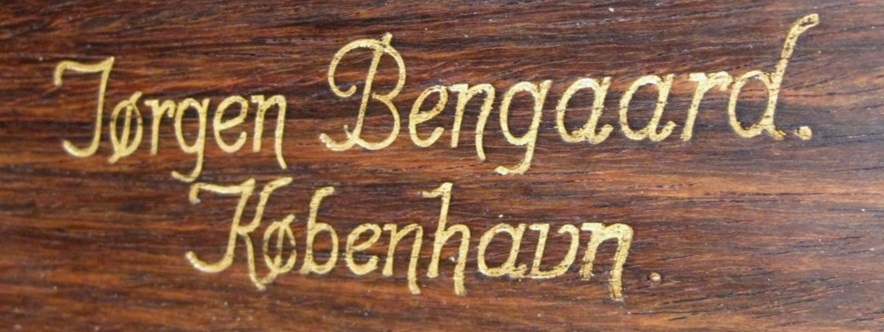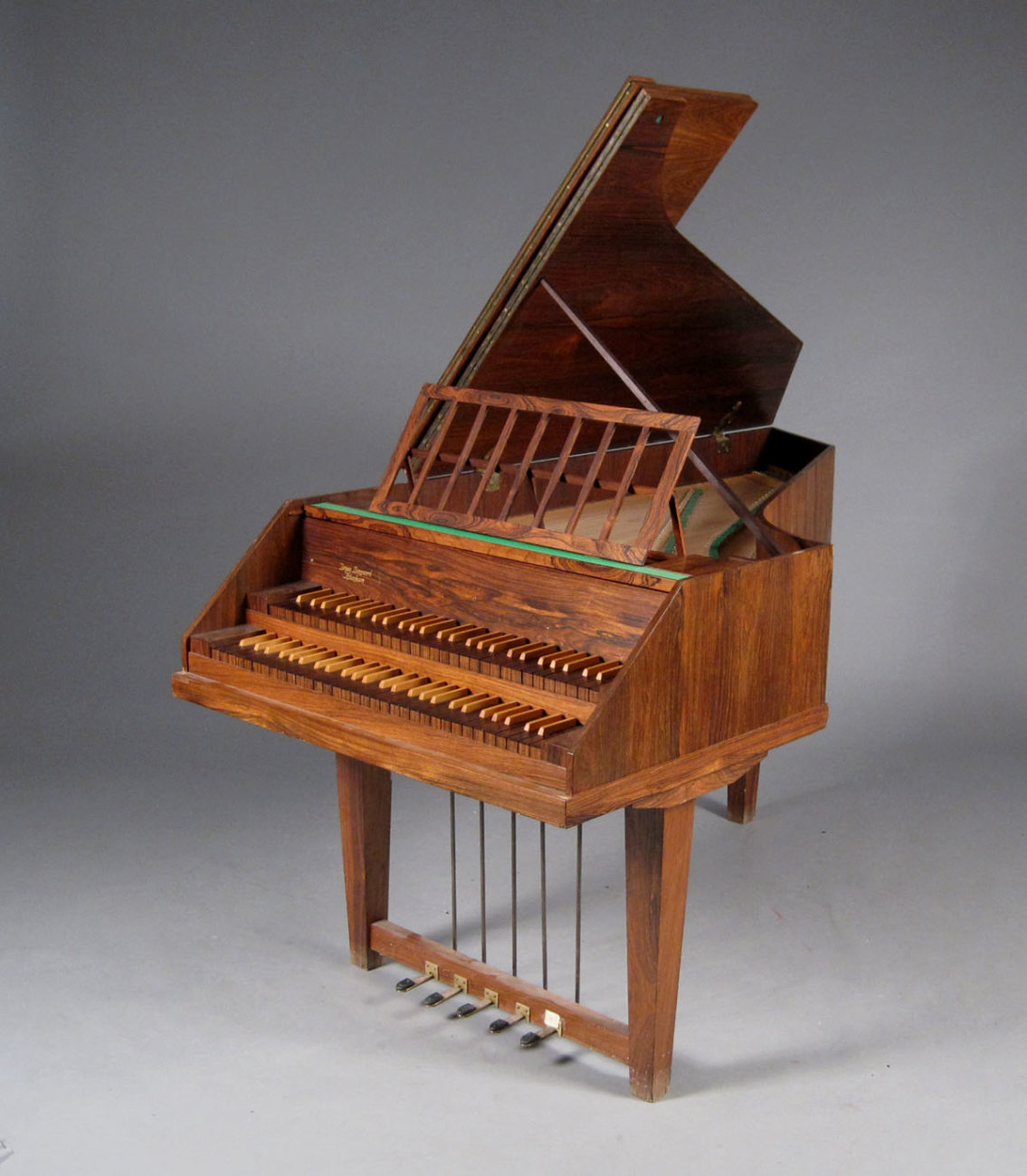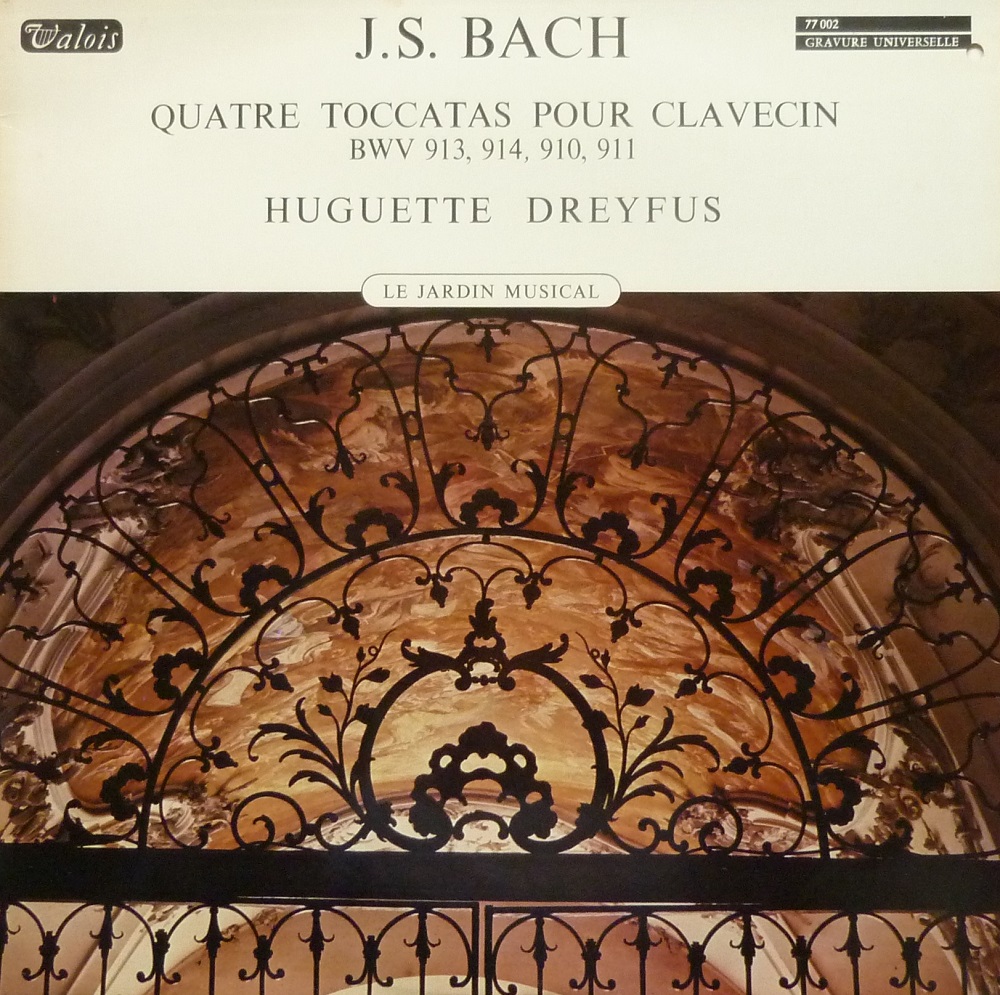Étiquette : Huguette Dreyfus

Huguette Dreyfus clavecin Jørgen Bengaard
Enregistré à Copenhague en 1965 Prise de son: Peter Willemoës
Microsillon Valois 77002
Les Toccatas pour clavecin de Bach sont bien moins souvent enregistrées que ses autres œuvres dédiées à cet instrument. Pourtant, elles représentent une étape importante de l’évolution du compositeur. Comme l’écrivait Harry Halbreich: « C’est au clavecin que la Toccata de type buxtehudien allait fêter son apothéose inattendue sous l’impulsion du génie d’un Bach de vingt-cinq ou trente ans en pleine révolution artistique. Les sept Toccatas BWV 910 à 916 représentent l’ensemble le plus important d’œuvres de jeunesse de Bach pour clavecin et le témoignage le plus frappant de sa phase de révolutionnaire romantique soulevé par le Sturm und Drang« .
Buxtehude a eu une influence déterminante sur le jeune Bach, et elle date de bien avant son voyage en 1705 à Lübeck, car on sait qu’à l’âge de treize ans, alors qu’il résidait chez son frère aîné Johann Christoph à Ohrdruf, il avait copié de sa main la grande Fantaisie-Choral « Nun freut euch lieben Christen g’mein (BuxWV210).
Huguette Dreyfus (1928-2016) possédait un clavecin français Blanchet datant du XVIIIème siècle, mais comme elle ne voulait pas le faire voyager, elle s’est décidée à faire ses enregistrements pour le label Valois sur un clavecin du facteur danois Jørgen Bengaard qui était la propriété de l’organiste Jørgen Ernst Hansen. Ce n’est que plus tard, au tournant des années 70, après sa rencontre avec Claude Mercier-Ythier, qu’elle pourra utiliser son précieux clavecin Henri Hemsch de 1754 sur lequel elle fera désormais ses enregistrements.

Au fond, sa démarche était similaire à celle de son contemporain Gustav Leonhardt qui, à la même époque, plutôt que d’enregistrer sur un clavecin historique, a fait également appel à un artisan peu connu, Martin Skowroneck, à ceci près que son instrument, inspiré d’un clavecin Dulcken (Antwerpen 1745), était de sonorité sensiblement plus proche des instruments historiques que celui de Bengaard. L’instrument touché par H. Dreyfus n’en présentait pas moins une densité de son et une variété de couleurs appropriée au style très libre de ces Toccatas.

Les œuvres sont présentées dans l’ordre chronologique. Les Toccatas en ré mineur BWV 913 et mi mineur BWV 914 datant probablement de 1707-1708, alors que les deux autres, en fa dièze mineur BWV 910 et en ut mineur BWV 911, également composées à Weimar sont un peu plus tardives, au plus tard de 1713.

_______________
Dreyfus – J-S Bach – Toccatas for harpsichord BWV 913, 914, 910 & 911
Huguette Dreyfus harpsichord (Jørgen Bengaard)
Recorded in Copenhagen 1965 (Ing. Peter Willemoës)
Valois LP 77002
Bach’s Toccatas for harpsichord are much less recorded than his other works for this instrument. Howevern they represent an important step in the composer’s evolution. As Harry Halbreich wrote : « With the harpsichord, the Buxtehude type Toccata met an unexpected apotheosis under the impulse of the genius of a twenty-five or thirty- years old Bach in a full artistic revolution. The seven Toccatas BWV 910 to 916 are the most important group of harpsichord works from Bach’s youth and the most striking testimony of his period as a romantic revolutionary roused by Sturm und Drang« .
Buxtehude had a major influence on the young Bach , and this dates back to much earlier than his 1705 travel to Lübeck. Indeed, it has been discovered that at the age of thirteen, when he was living in Ohrdruf with his elder brother Johann Christoph, he made a hand copy of the great organ Choral Fantasy « Nun freut euch lieben Christen g’mein (BuxWV210).
Huguette Dreyfus (1928-2016) owned a French Blanchet XVIIIth century harpsichord, but since she did not want to travel with it, she decided to make recordings for the Valois label on a harpsichord by Danish builder Jørgen Bengaard owned by organist Jørgen Ernst Hansen. Only later, around 1970, after she met Claude Mercier-Ythier, was she allowed to use his rare Henri Hemsch 1754 harpsichord on which she then made her recordings.
In fact, her approach was akin to Gustav Leonhardt’s who during same period, rather than recording on an historical harpsichord, also had resort to an almost unknown independent builder, Martin Skowroneck. But his instrument, inspired by a Dulcken harpsichord (Antwerpen 1745), sounded somewhat closer to the historical instruments than Bengaard’s. Nevertheless, the instrument played by H. Dreyfus had a density of tone and a variety of coulours well adapted to the very free style of these Toccatas.
The works are presented in chronological order. The Toccatas in D minor BWV 913 and E minor BWV 914 were probably composed in 1707-1708, whereas the other two, in F sharp minor BWV 910 and C minor BWV 911, also composed in Weimar came a little later, in 1713 at the latest.
Les liens de téléchargement sont dans le premier commentaire. The download links are in the first comment.



